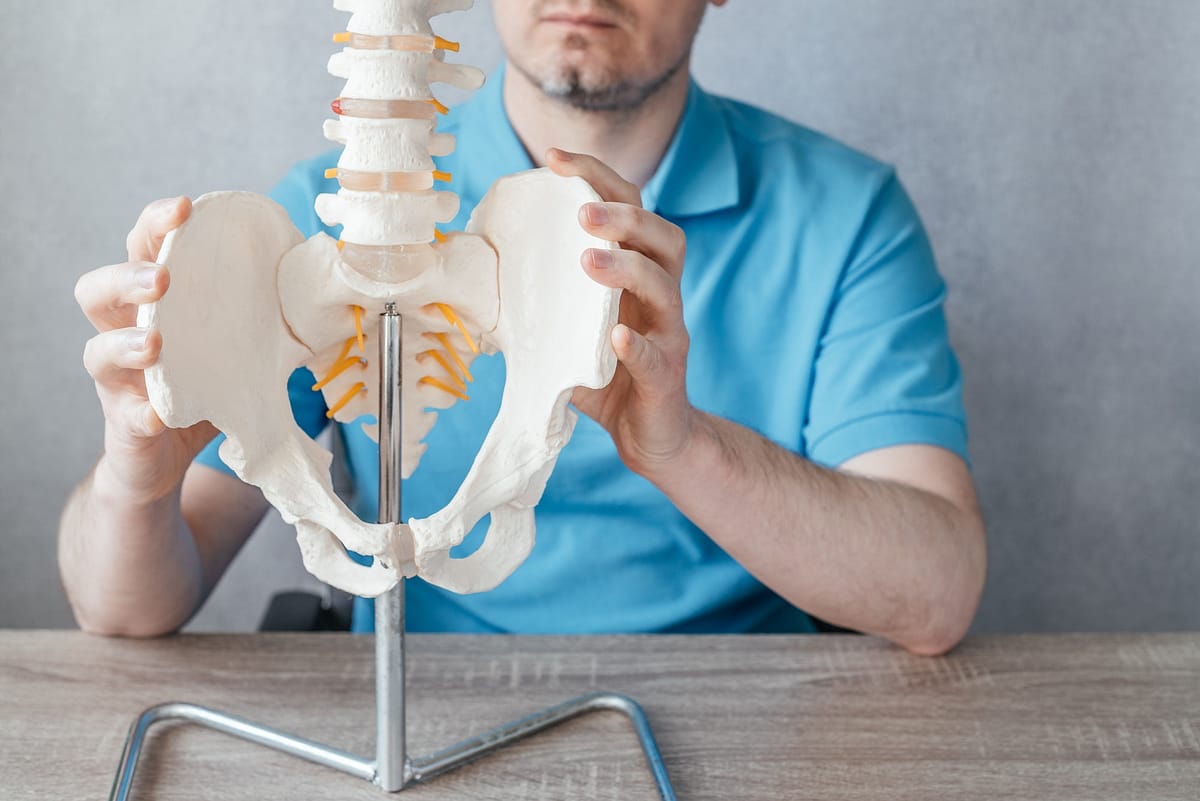What is hip osteoarthritis?
Hip osteoarthritis is characterized by progressive loss and degeneration of articular cartilage, sclerosis (hardening) of underlying bone and excessive bone growth leading to osteophytes (forest protrusions). These often lead to pain, stiffness, loss of mobility, reduced daily activities and reduced quality of life.
Can I be helped?
The answer to this question depends on what stage of the osteoarthritis you are at. The good news is that almost everyone benefits from treatments! The severity of hip osteoarthritis is expressed in 4 grades, being 1: mild, 2: moderate, 3: severe, 4: very severe. Only the last group, being grade 4 people with very severe osteoarthritis, cannot be helped with manual therapy.
What should I do with these complaints?
It has been scientifically proven that physiotherapy and manual therapy are beneficial for people with hip osteoarthritis. Patients with hip osteoarthritis experience less pain, stiffness, loss of function and a better quality of life after a series of treatments.
In fact, scientific research shows that manual therapy consisting only of manipulations/mobilizations and stretching gives better results than physiotherapy consisting of exercise therapy alone. And that if you combine manual therapy with physiotherapy, you can expect even better results.
What does such a therapy look like?
An intake is done during the first session. A picture of your situation is sketched on the basis of an interview. Then a physical exam is performed to test the function of the hip and surrounding joints. Goals are set and therapy can begin. Scientific research shows that after a period of 5 weeks, 81% of people treated feel that the therapy was a success. In addition, patients also experience less pain, better hip function and mobilities. These effects persisted in the study group for up to 29 weeks without additional or maintenance therapy.
what does such a treatment look like?
First there is a warm-up, in which we use devices. Then stretching techniques of pre-identified shortened muscles are stretched, followed by a manipulation in each limited position. As soon as possible, exercise therapy is added to the treatment. This strengthens the muscles and ensures that the gained treatment effects last longer.
Why am I experiencing pain?
High intra-articulated pressure, due to shortening of the joint capsule in osteoarthritis, is associated with pain intensity (Robertsson 1995). These pathological changes lead to reduced mobility of the hip joint. Manual therapy (manipulation and stretching) is partly based on improving the elasticity of this joint capsule and surrounding muscles. This would cause an increase in pain and stiffness, as well as increased mobility.
Sources:
Hoeksma HL, Dekker J. Comparison of manual therapy and exercise therapy in osteoarthritis of the hip. a randomized clinical trail. 2004. Arthurtis Theum. 15;51(5): 722-9
